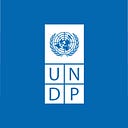Weaving past and future

Indonesia is well known for its intricately-patterned batik, but the vast archipelago nation has many different styles of fabric, each with its own varied traditions.
The islands of Wakatobi, in southeast Sulawesi attract divers and snorkelers from all over the world and in the small village of Pajam, Kaledupa, the women are a powerhouse of economic enterprise.
With UNDP support they have breathed new life into the traditional tenun weaving technique.
Wakatobi, in the Banda Sea, is remote, which has caused problems for the community in the past. It’s a two-hour boat ride to the main island of Sulawesi, where their main source of cotton used to be. The knowledge of weaving threatened to die out because it became prohibitively expensive to take the trip, due to the rising cost of materials and transportation.


“There was a time where we had to stop our tradition, [because] we couldn’t get the materials needed to continue it. But now we can,” says Ratna, 45. Sitting on the floor at a large wooden loom she effortlessly weaves a cotton tenun scarf which she will sell at either on the local or tourist market.
The women no longer need to cross the sea to get cotton because they have started a plantation in their own community.
They’re working with UNDP and the Global Environment Facility Small Grants Programme, which has equipped and trained them to become self-sufficient entrepreneurs.

In partnership with Pembinaan Kesejahteraan Keluarga and local organization Forkani, a three-month entrepreneurship hub was created to teach women like Ratna how to plant, harvest and dye cotton for traditional weaving.
Land was cleared for a cotton plantation and the women planted seedlings and waited six months for the harvest. Once the cotton is harvested it is spun, dyed and woven into the region’s rich and vivid patterns.
The women make everything from scarves to keychains that can be sold for up to US$35-$100. The money goes back into the community.

But it’s not just about the extra money. Having a local source of cotton ensures the materials are readily available and economically feasible. It gives women an economic alternative to fishing and working in tourism, and protects something much more valuable; their unique way of telling stories in fabric.
The project has given Ratna and her friends a renewed sense of purpose in safeguarding their traditions; they know their designs will be both celebrated and used in times of celebration, such as weddings.
Ratna takes pride knowing that the age-old knowledge bound up in tenun weaving is secure.
“It is important for kids to learn [weaving], to maintain the local traditions. My parents taught me how to weave and now I pass it on to the next generation,” she says.

Story by: Kiana Bonnick, Photos by: UNDP Indonesia/Fieni Aprilia
Established in 1992, the year of the Rio Earth Summit, the GEF Small Grants Programme embodies the very essence of sustainable development by “thinking globally acting locally”. By providing financial and technical support to projects that conserve and restore the environment while enhancing people’s well-being and livelihoods, SGP demonstrates that community action can maintain the fine balance between human needs and environmental imperatives. To learn more, click here.
